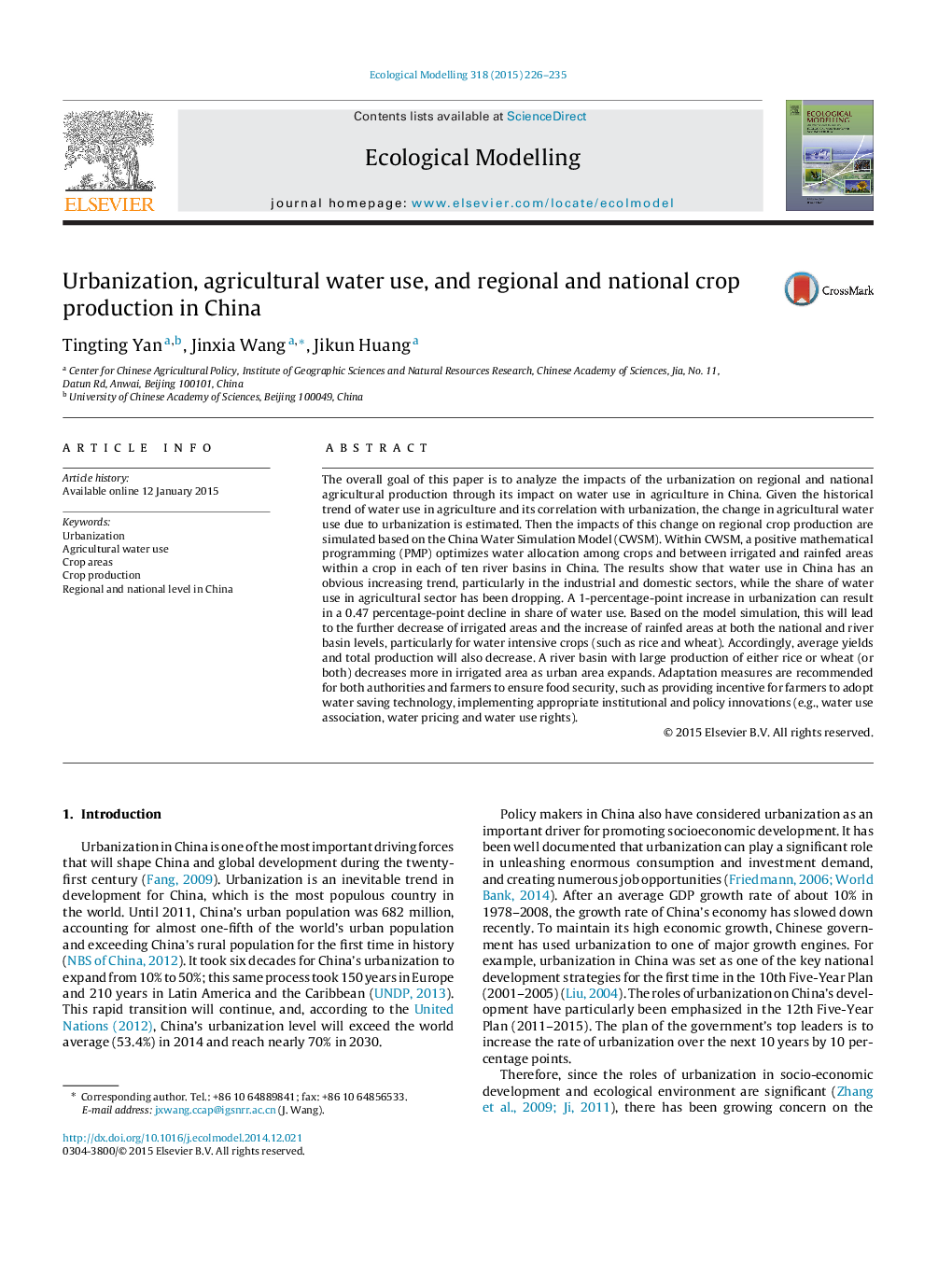| Article ID | Journal | Published Year | Pages | File Type |
|---|---|---|---|---|
| 6296424 | Ecological Modelling | 2015 | 10 Pages |
â¢Using China Water Simulation Model for simulation at regional and national level.â¢Agricultural water use is negatively correlated with urbanization in China.â¢Urbanization results in decrease of irrigated areas and increase of rainfed areas.â¢A river basin with more rice or wheat (or both) decreases more in irrigated area.â¢Average yields and total production will also decrease due to urbanization.
The overall goal of this paper is to analyze the impacts of the urbanization on regional and national agricultural production through its impact on water use in agriculture in China. Given the historical trend of water use in agriculture and its correlation with urbanization, the change in agricultural water use due to urbanization is estimated. Then the impacts of this change on regional crop production are simulated based on the China Water Simulation Model (CWSM). Within CWSM, a positive mathematical programming (PMP) optimizes water allocation among crops and between irrigated and rainfed areas within a crop in each of ten river basins in China. The results show that water use in China has an obvious increasing trend, particularly in the industrial and domestic sectors, while the share of water use in agricultural sector has been dropping. A 1-percentage-point increase in urbanization can result in a 0.47 percentage-point decline in share of water use. Based on the model simulation, this will lead to the further decrease of irrigated areas and the increase of rainfed areas at both the national and river basin levels, particularly for water intensive crops (such as rice and wheat). Accordingly, average yields and total production will also decrease. A river basin with large production of either rice or wheat (or both) decreases more in irrigated area as urban area expands. Adaptation measures are recommended for both authorities and farmers to ensure food security, such as providing incentive for farmers to adopt water saving technology, implementing appropriate institutional and policy innovations (e.g., water use association, water pricing and water use rights).
